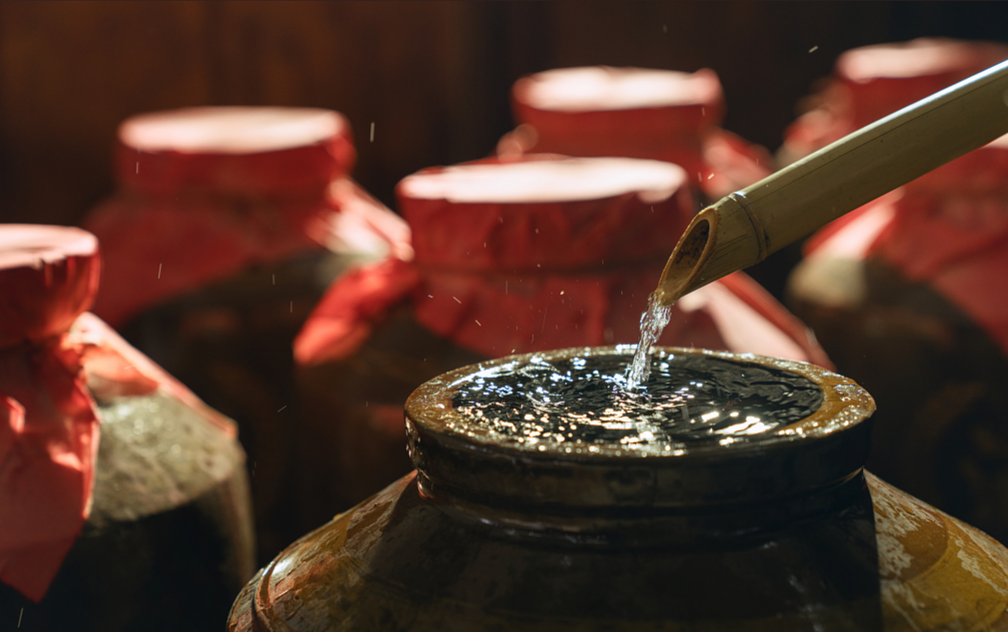The revival of fruit eaux-de-vie – episode 2 – Barrel ageing; an alternative?
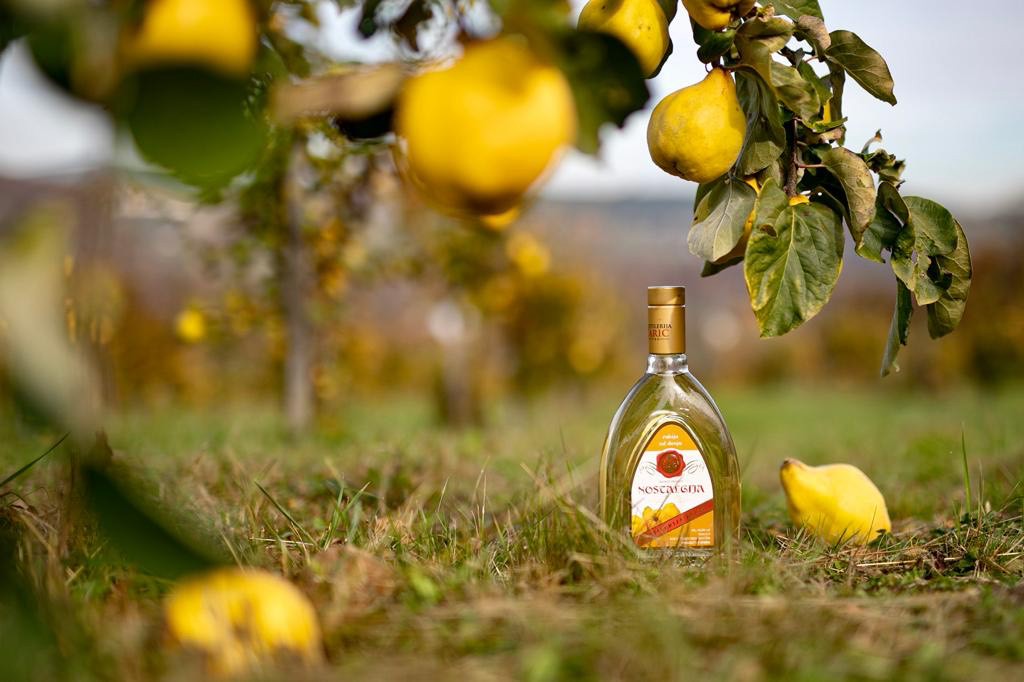
Freshly distilled eaux-de-vie tend to be overly assertive and do not easily release their complete aromatic palette; it is usually necessary to allow them time to stabilize and harmonize between 6 months and sometimes up to 3-15 years. This is normally done in stainless steel vats or in glass containers sealed with a tight muslin cloth. A common practice almost everywhere in Europe for Eaux-de-vie such as Mirabelle plum, William pear, raspberry and apricot… Yet, in Central and South-East Europe, it is standard to age some of these fruit brandies in wooden barrels for a few months up to a few years.
In Central and South-East Europe, it is standard to age some of these fruit brandies in wooden barrels for a few months up to a few years.
The process is rather complex and depends on the desired style of the product that the producer is aiming for. It also depends on the technical capabilities, equipment, and infrastructure available. Ideally, freshly distilled distillate would go into a temperature-controlled environment (usually temperature controlled stainless steel vats) where it will undergo a process of stabilization, harmonization, and cold filtration. Once that process is finished, the producer will select some of the distillates for further aging in oak. This is especially true of plum, quince, apple and grape which are usually aged for longer periods of time -in most of the cases several years. Depending on the style the producer aims for, Williams Pear and Apricot can also undergo oak ageing, but due to their specifics the ageing is significantly shorter.
The key issue is always to determine the most appropriate length of time the distillate spends in wood. After all, the point is to preserve the fruity profile of the distillate and consequently, of the final product, while at the same time making it more complex and interesting for the consumer. After oak ageing, the distillates are either -if necessary- blended, then filtered and bottled or transferred back into stainless steel vats to preserve their fruity profile, before being either blended or bottled. The ultimate aim of this process is to give the final product a greater potential with food or to be used in cocktails. This is, of course, true with both aged and non-aged spirits, as complexity is generally always sought after. This is, however, a rare practice among Western European producers, except for plums and of course Calvados.
The point in the whole process is to preserve the fruity profile of the distillate and consequently the final product, while at the same time making it more complex and interesting for the consumer.
During a recent trip to Bulgaria, I met the charming people of the Isperih distillery, a producer of fruit rakias, who ages a large part of its wide range of brandies in wooden casks. I also met in Sofia, a leading specialist in the category, Svetlin Mirchev (The RakiaSHOP). Svetlin organized a tasting session of what he considers to be some of the best samples of cask aged fruit rakias from Bulgaria, Serbia and Bosnia-Herzegovina. The tasting was breathtaking! My certainties are now gone! I have since left all my preconceived ideas about the ageing of these spirits, and I do believe they deserve more attention.
Some will certainly find this unnecessary given the potential risks of masking the delicate primary aromas of these fragile EDVs with an extended wood contact. But numerous exchanges and conversations with fellow tasters of the Spirits Selection (All knowledgeable on the category) I now believe that ageing in casks is indeed beneficial for these spirits.
After a little technical reminder, we need to look at the differences between these two vastly different markets – Western Europe vs. Eastern Europe/Balkans – and their specificities.
As we know, flavors can have several origins: Primary aromas come directly from the fruits, while secondary aromas are formed during fermentation. Lastly, tertiary aromas appear during distillation and/or during ageing, if in contact with wood.
Some fruits have very pronounced primary aromas that are quite resistant to both fermentation and distillation. This is the case for mirabelle plums, as well as for Williams pears, the most widely consumed fruit EDV in the world. On the other hand, the primary aromas of cherries are extremely fragile and are totally degraded during fermentation and distillation. Kirsch therefore does not taste like cherry but instead, develops almond and fruit-stone flavors, thus its extensive use in cooking.
Macerated EDVs do not develop either secondary or tertiary aromas. Instead, EDV such as raspberry reveals all its flavors when it is worked very quickly to avoid any mold and other undesirable side effects of a long production cycle. This extremely fragile fruit has an outstanding organoleptic potential, giving marvels of finesse and intensity in aromas, but can easily turn into an unpalatable mess if badly handled.
In Western Europe, most EDVs are sold clear and unaged, except for plum and apple (Calvados). Both of the fruits are able to withstand prolonged contact with wood. Producers in these regions are above all looking for EDVs with obvious primary aromas. In a previous article on the revival of EDVs, Bernard Baud, Managing Director of the French group Massenez-Peureux, noted:
“The particularity of fruits eaux-de-vie is that they are trivial,” says Bernard Baud, President of the French Federation of fruit spirits, and General Manager of the Massenez-Peureux group. “The consumers must feel the same organoleptic characters as when they bite in the actual fruit. A pear eau-de-vie smells like a pear, tastes like a pear and some feel like a pear. We must find the aroma of the fruit in all its purity. The tasting lexicon of fruit eaux-de-vie is therefore quite simple. It is also the Achilles heel of the category. For example, the distillates that serve as the basis for most brandies and marc do not have enough aromas on their own, it is the time spent in barrels that will give them their aromatic bouquet, with a whole palette of aromas for which we have developed a complex vocabulary: Woody, spicy, rancio, vanilla notes etc.”
In Eastern Europe and the Balkans consumers are looking for both an aromatic EDV but also one that is rich, round, and complex on both the nose and palate.
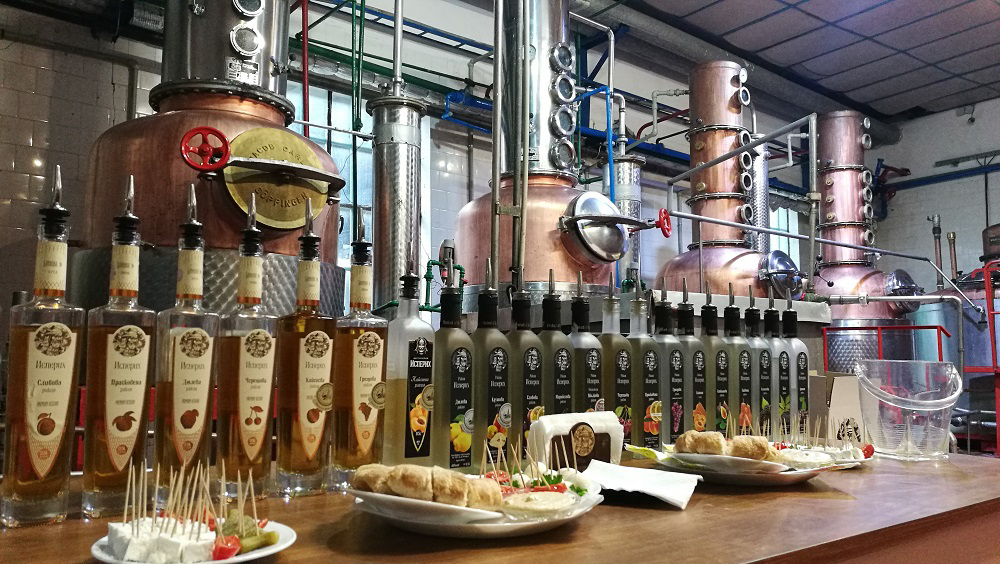
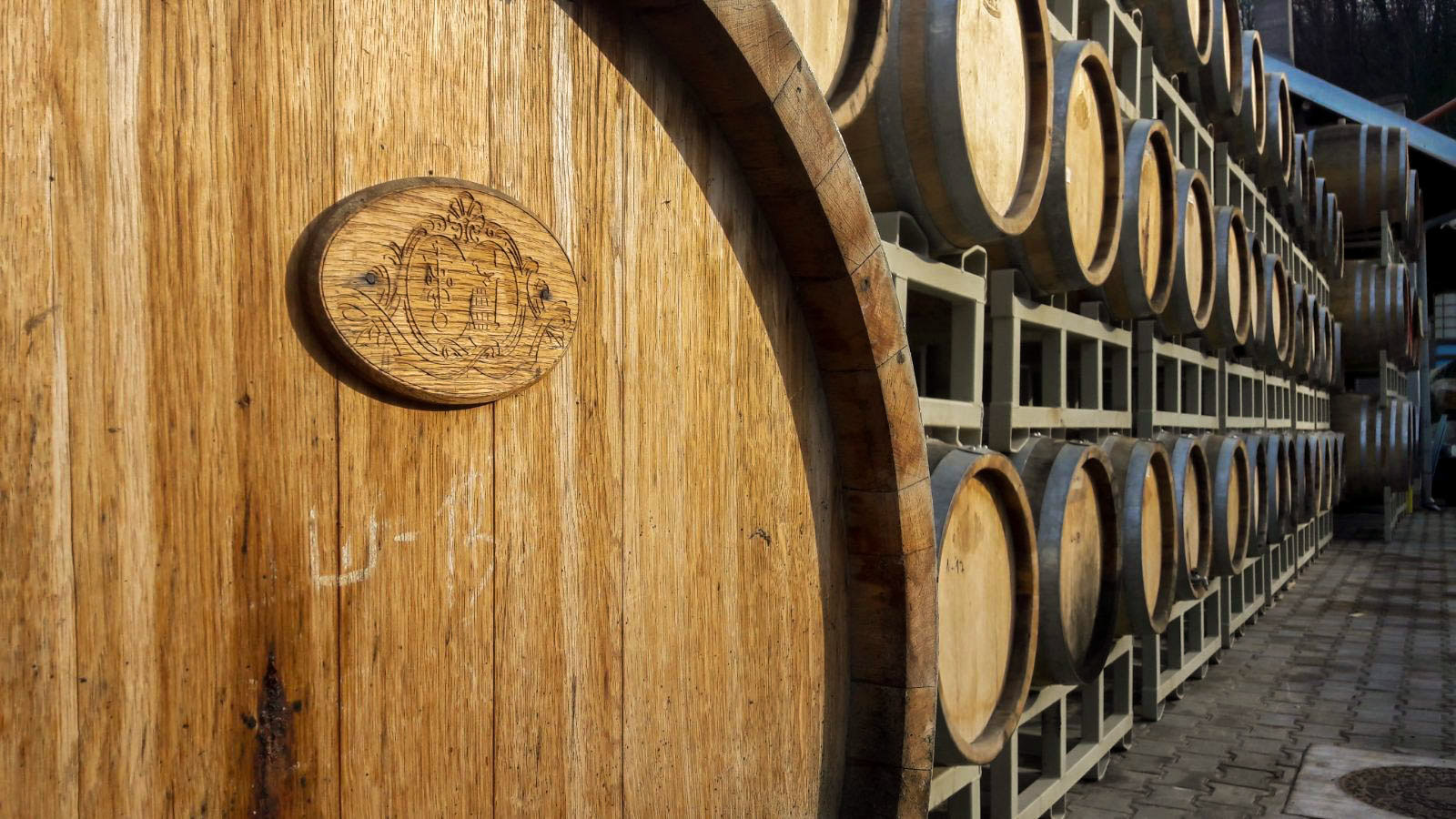
The above is true, if you are talking to Western European consumers. But in Eastern Europe and the Balkans – avid consumers of fruit EDVs and grape rakias/brandies above all other spirits- are looking for both an aromatic EDV but also one that is rich, round, and complex on both the nose and palate, and that can easily be mainly combined with different kinds of food or consumed as a digestive, aperitif and/or in cocktails depending on their style. The most popular fruit EDVs in this region would normally be intended to be combined with a certain kind of food and meet at least one of the other criteria. When questioning some specialists in fruit brandies from Eastern Europe, we learn that they find French EDVs too “linear”.
Another key consideration to bear in mind is the consumption pattern in both markets: in western Europe, EDV are generally consumed as a digestive to a hearty meal. Whereas, in Eastern Europe, these EDV are consumed chilled with the meal – either with the appetizer or the main dish but rarely a desert. It is something so deeply rooted in Eastern table rituals, that it can be compared the French tradition of bread and butter with a meal. This difference in consumption demands a multi-faceted EDV to complement a meal, as we would expect a fine wine to match a particular dish.
These EDV are consumed chilled with the meal – either with the appetizer or the main dish but rarely a desert. It is something so deeply rooted in Eastern table rituals, that it can be compared the French tradition of bread and butter with a meal.
These “rakias” aged in casks sell very well locally but are also well exported internationally. On the other hand, Western producers face a lack of interest in their products and are quickly overshadowed by the attention given to whiskies, gins, and rums. All products that tend to be complex and packed with tertiary aromas. Western EDV’s fail to meet these criteria due to their linear flavor profile. The volumes of EDVS produced in the Balkans are significant and -surprisingly- by far the largest market for rakia seems to be Australia, followed by the traditional local markets and, most of all, Serbia as well as the USA (given the size of the market). According to importers of rakia from the Balkans in Australia, oak-matured plum Rakias are mostly consumed in Asian restaurants who are particularly fond of these products due to their style and profile. It is certainly not the diaspora of Yugoslav emigrants in Australia which can explain this commercial success alone.
The volumes of EDVS produced on the Balkans are significant and -surprisingly- by far the largest market for rakia seems to be Australia.
In France, aside from plums and apples, wooden ageing for EDV is not common. There are some notable exceptions, such as the two Williams Pear EDVs from the Manguin distillery in Avignon. The “Golden Pear” is aged for 15 months in a 3 years old Sauterne cask from the Grand Cru Classé Château Myrat. The “Bourbon barrel” on the other hand, is aged for 30 months in a bourbon cask previously filled with 12-year-old single malt. Interestingly, the Manguin distillery’s top seller is a blend of amber rum from the islands of Trinidad and Barbados with their Williams pear EDV: the Caraxès. This range features some interesting declinations and experimentations featuring different barrels. The Caraxès range appeals to a younger target group, looking for more versatility and complexity. This is something that should be considered by our producers here in Western Europe.
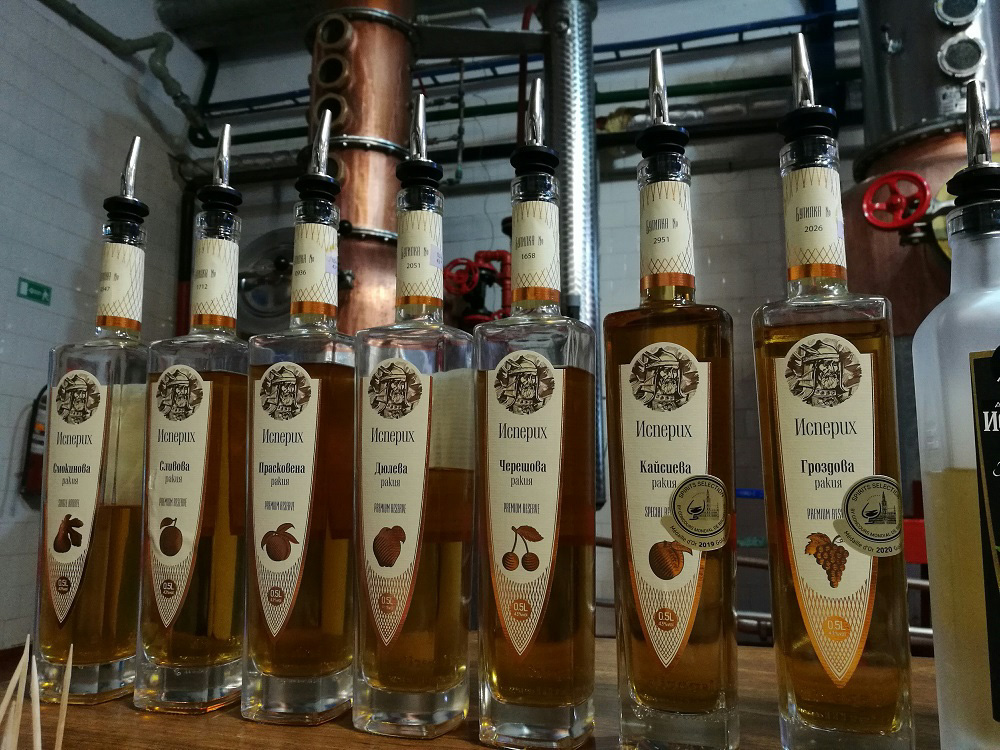
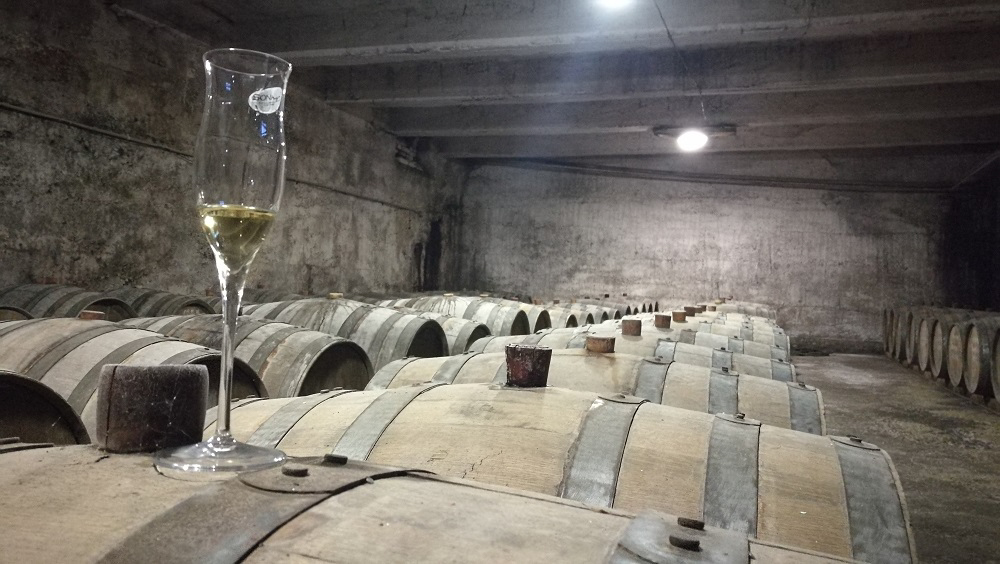
Of course, not all fruits are suitable for barrel ageing, but we find some that are particularly favored, such as quince, plum, fig, apple and grape with Williams pear and apricot also demonstrating good potential when aged for a shorter time in wood.
After this passage in barrels or tuns for a few months to a few years, the aged EDVs are then transferred into stainless steel vats to stabilize them and preserve their fruitiness. This last step is especially important as it prevents them from becoming “brandies”.
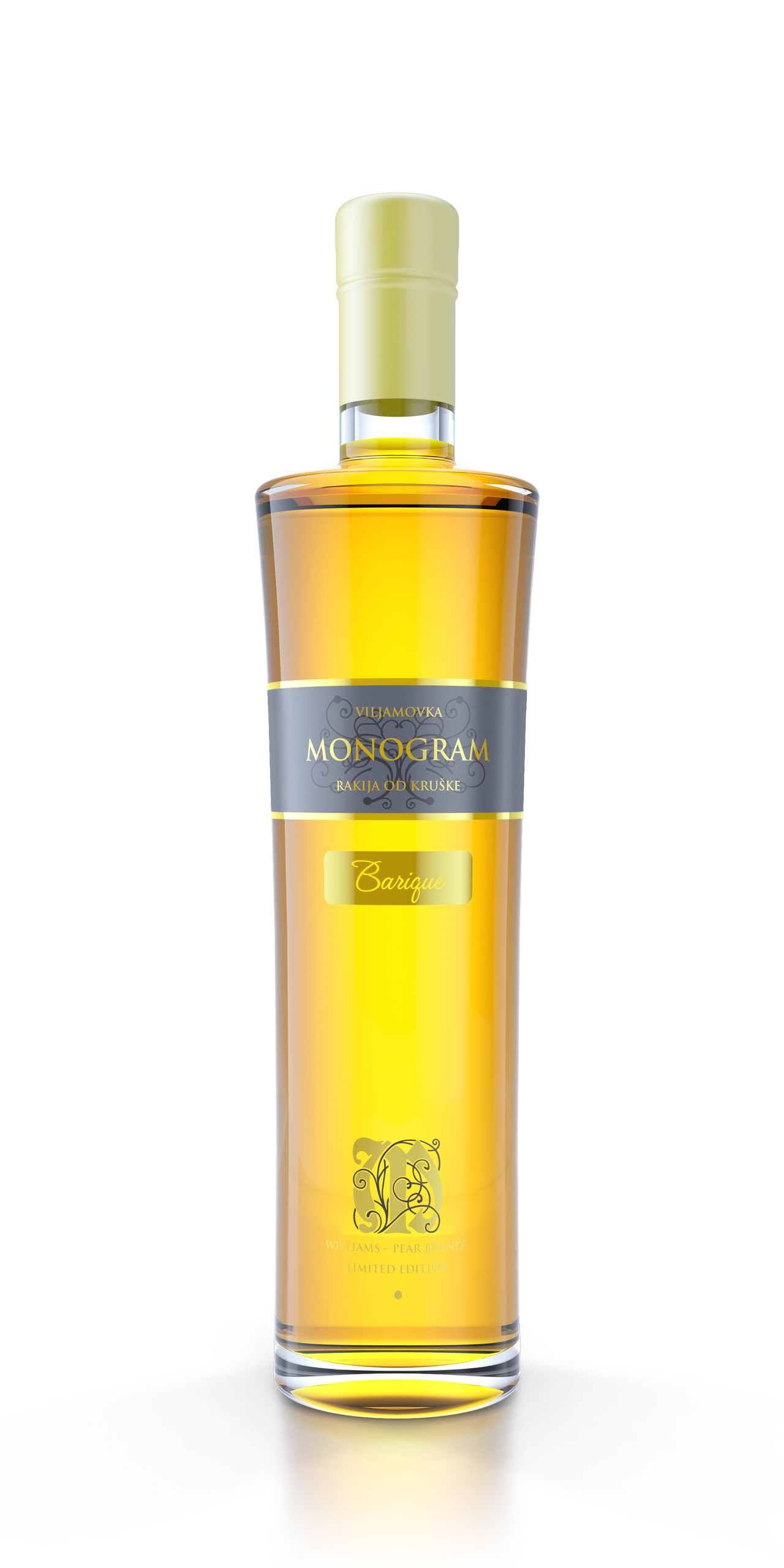 Monogram – William Pear Barrique – Bosnia Herzegovina
Monogram – William Pear Barrique – Bosnia Herzegovina
Williams pears’ distillate is difficult to age in barrels. The wood quickly flattens its organoleptic character if badly or aged too long. This Bosnian producer plays with different sizes and types of barrels with a different level of exhaustion and different “chauffe”. These EDVs do not spend more than a year in wooden barrel. They are then blended and rested in stainless steel vats.
The nose remains fruity, with notes of pear but with added aromas of banana, coconut and caramel. The palate is round and soft, but also immensely powerful, delivering the same notes of ripe fruits, with a long, fresh and minty finish.
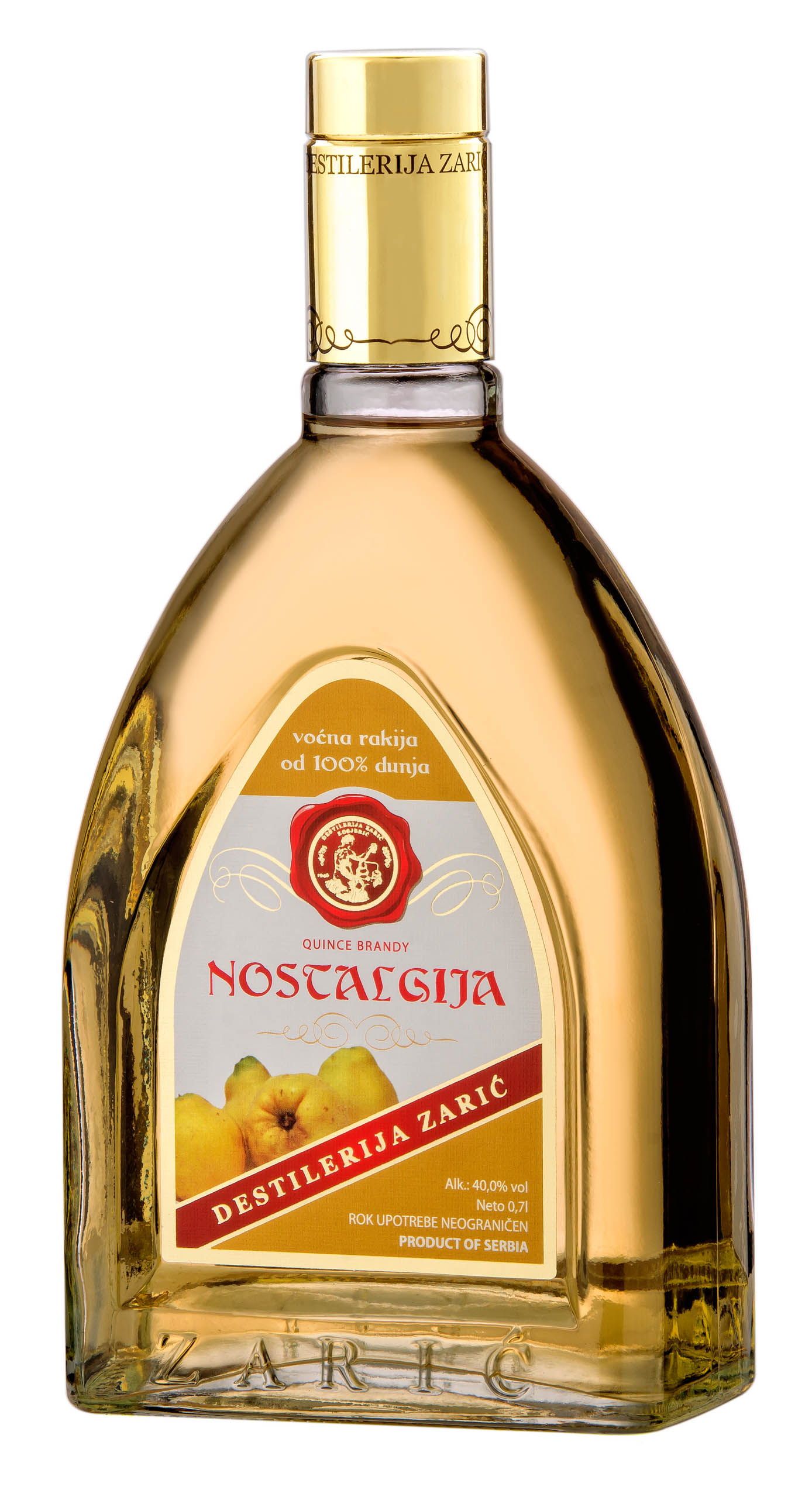
Nostalgija Rakija od dunja – Quince – Serbia – Destilerija Zaric
Distillation in an Italian Cadalpi pot still, equipped with a small column.
Ageing is carried out in large tuns for an average of three years using a method that could be likened to the “solera” system. Each year approximately 1/3 of the contents is taken out, filtered, and then bottled or moved to stainless steel vats in order to preserve the fruity profile. The tuns are then levelled with the same volume of white EDV. Before entering the tun, the distillate, depending on the circumstances, spends around 3 months in temperature controlled stainless steel vat.
The aromas of freshly distilled quince remain quite dominant and are accompanied by notes of lemongrass and fresh lemon. Aromas of gentle vanilla and caramel first coat the mouth and continue on fresh and lemony notes combined with marked spiciness.
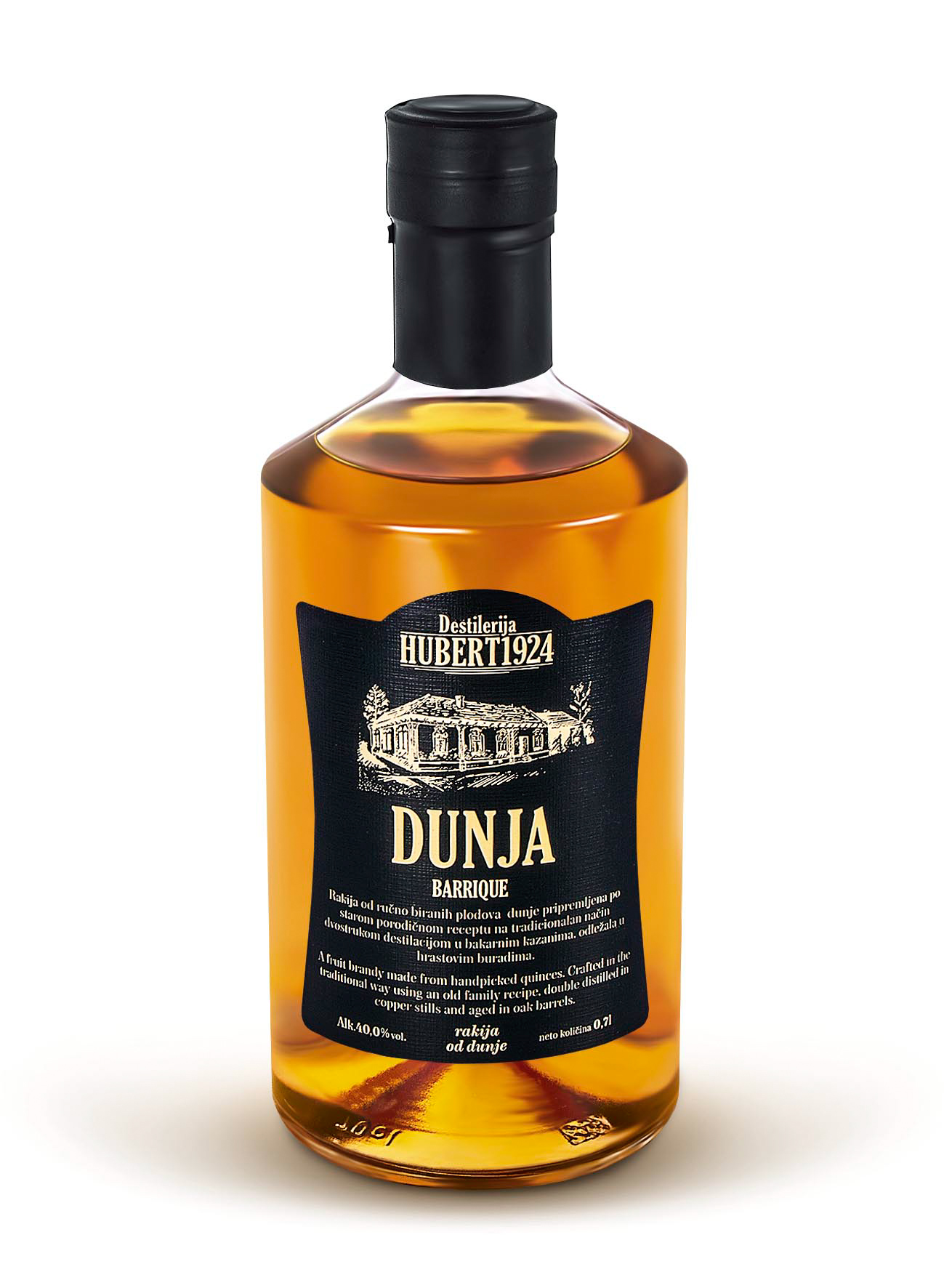
Hubertova Dunja – Quince – Serbia – Destilerija Hubert 1924 D.O.O.
Distillation in two stages in a Charentais-type still and ageing of the youngest distillate in the blend for at least two years in barrels with the oldest being 4 years in oak.
The nose is very elegant and complex, with herbaceous notes, tea leaves, but also richer notes of coconut, cocoa and coffee. On the palate, still these notes of fresh herbs, tea leaves and mint. Exceptionally long finish on these last notes.
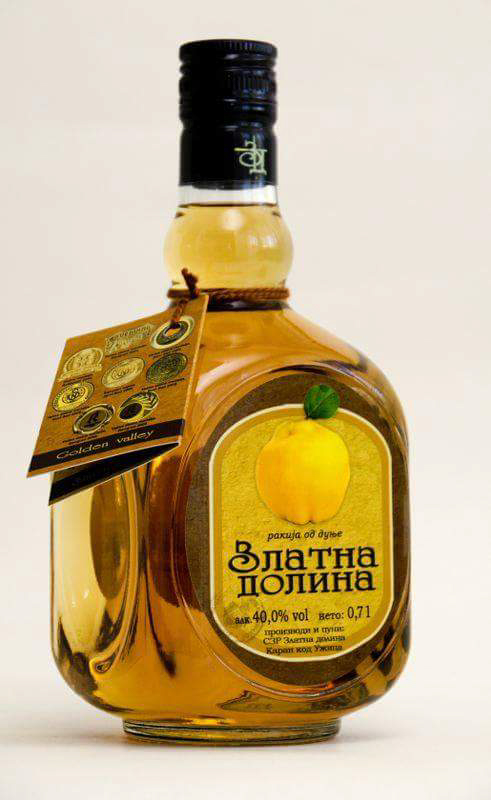
Zlata Dolina Dunja – Quince – Serbia – SZR Zlatna Dolina
Distillation in an old classical Lampek 180 liters still followed by an average period of 3 years of ageing in 450 liters and 500 liters oak barrels with the youngest distillate being 2 years in oak. After the time spent in oak the distillates from different barrels are blended and moved to stainless steel vats in order to preserve the fruity profile.
The profile is very aromatic, with an impressive nose of very ripe quince, banana and honey. The palate is round, rich, and well-balanced.
Gold Medal 2019 Spirits Selection
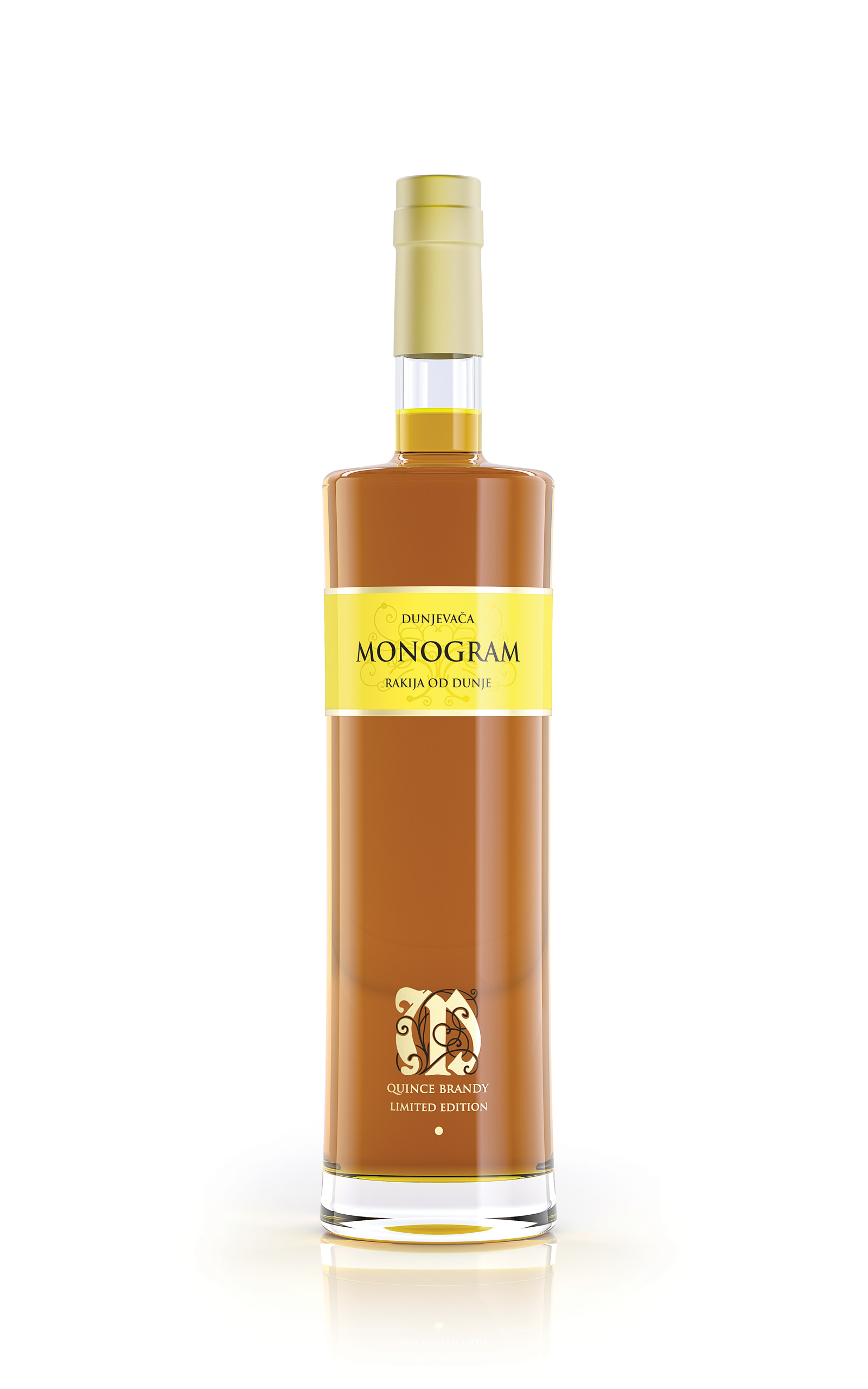
Monogram Dunjevaca – Quince – Bosnia Herzegovina
Distillation in a pot still equipped with a column -similar to Irish stills and aged for minimum of 4 years in barrels.
A lighter EDV on the aromatic level, with herbaceous, iodized, and mentholated notes, but a powerful mouthfeel.
Silver medal Spirits Selection 2019
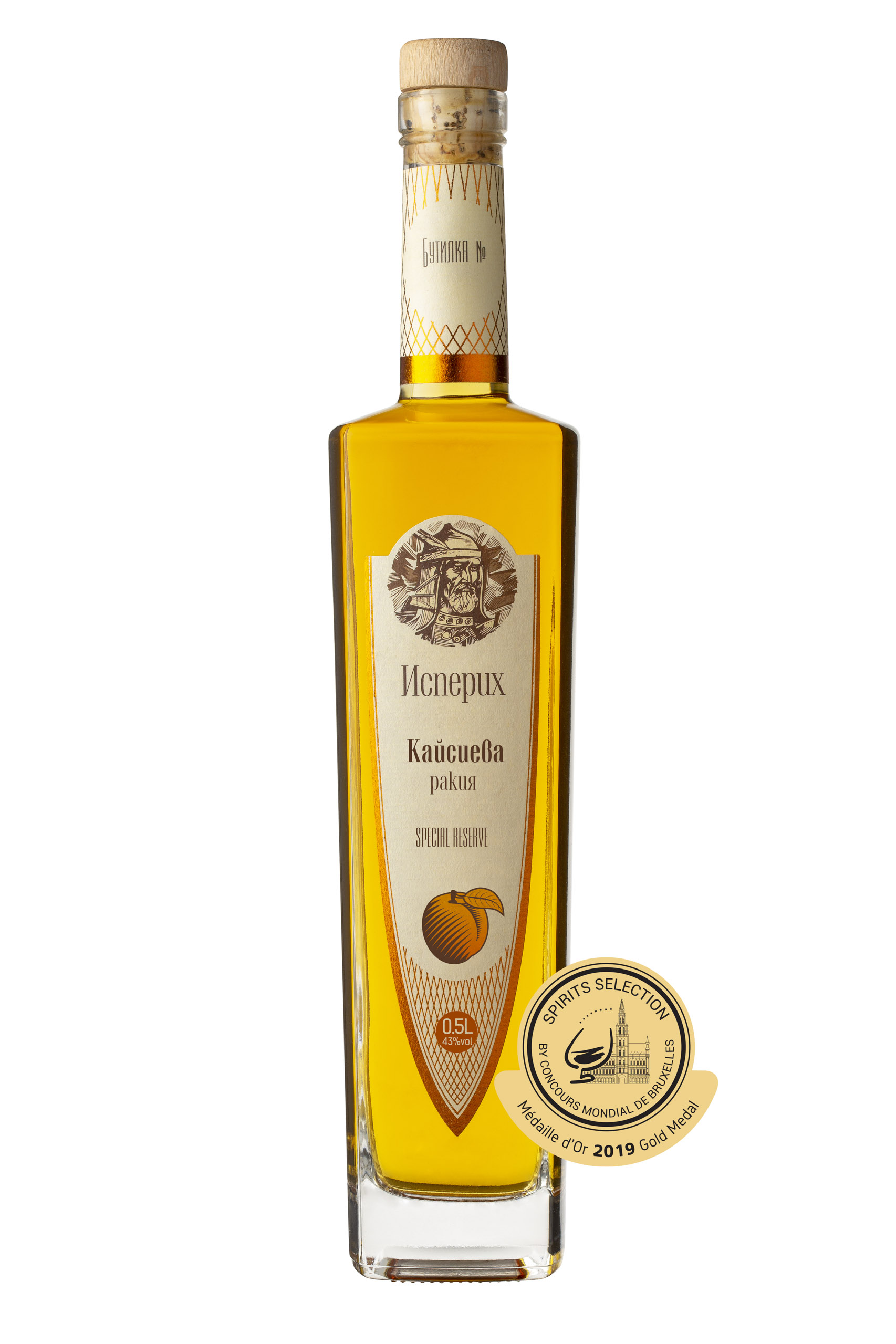
Apricot rakia Isperih Special Reserve – Apricot – Bulgaria – XKK JSC Isperih Distillery
Distillation in a J.Carl still and aged for 3 years in oak barrels.
Intense nose of apricot and light oak aroma underpinning the fruit with a light floral tone. Elegant but powerful nose! The palate is elegant, marked by apricot and peach. The oak plays a wonderful role in supporting the apricot flavors and the undeniable freshness of the alcohol. A complex rakia on stone fruit flavors with a very well-integrated wood.
Gold Medal 2020 and 2019 Spirits Selection
Rakia, what is it?
Rakia, Rakia or rakija, is a collective term for fruit brandies that are extremely popular in Central and South-Eastern Europe. All Balkan countries consider it as their national drink. Although they are essentially the same drink, Rakias are produced differently, depending on local tradition, availability of fruit, method of distillation and legal requirements in each country. As a result, there are many different styles within this category.
Grapes and plums are the two predominant types of fruit used in the production of Rakias, although fruits such as Williams pear, apricot and quince are widely used in other regions. There are therefore two general and obvious types of Rakias, grape based vs. fruit based. However within the grape Rakias style, we can identify three clear differentiations:
1) Grape Rakia is generally made from wine AND pomace of aromatic grapes such as muscat, traminer, misket and dimiyat. For these Rakia, cask ageing is often short so as to preserve the aromatic character of the grape used. It is legally allowed to produce this type of Rakia with a pomace issue from a non-aromatic variety, but this is generally not practiced.
2) Wine Rakia: this type of Rakia is usually distilled purely from wines of aromatic, with the occasional non-aromatic grape varieties. The choice I based on the style sought after. A style of Rakia that is generally gentler, powerful, and complex.
3) Pomace Rakia: As the name implies, these Rakias are similar to Italian grappa’s or German “tresterbrand”. However, this category also includes products that are made of blends of pomace and wine rakias, creating some confusion. Most of these products are from small-scale or home producers.
To add to general complexity of the category, the above rules are based on the Bulgarian laws and differ slightly the different Balkans countries.
Thierry Heins
With the contribution of Ulric Nijs, Svetlin Mirchev and Julia Kostadinova
